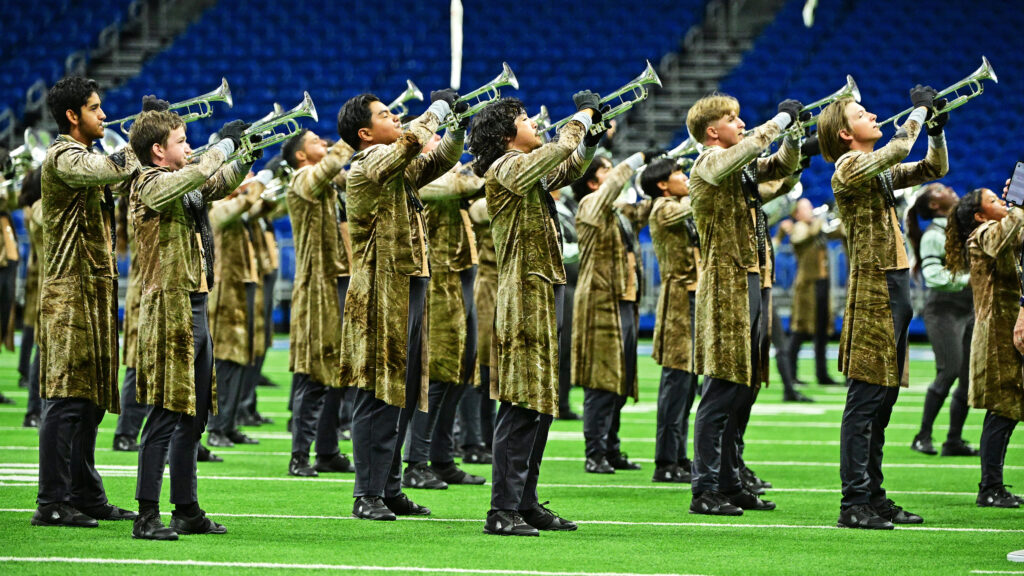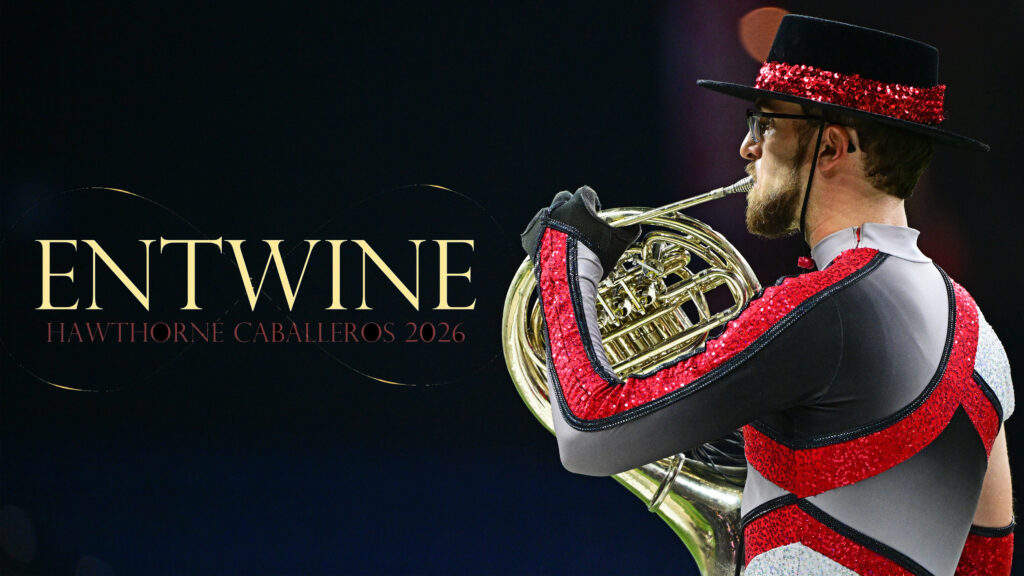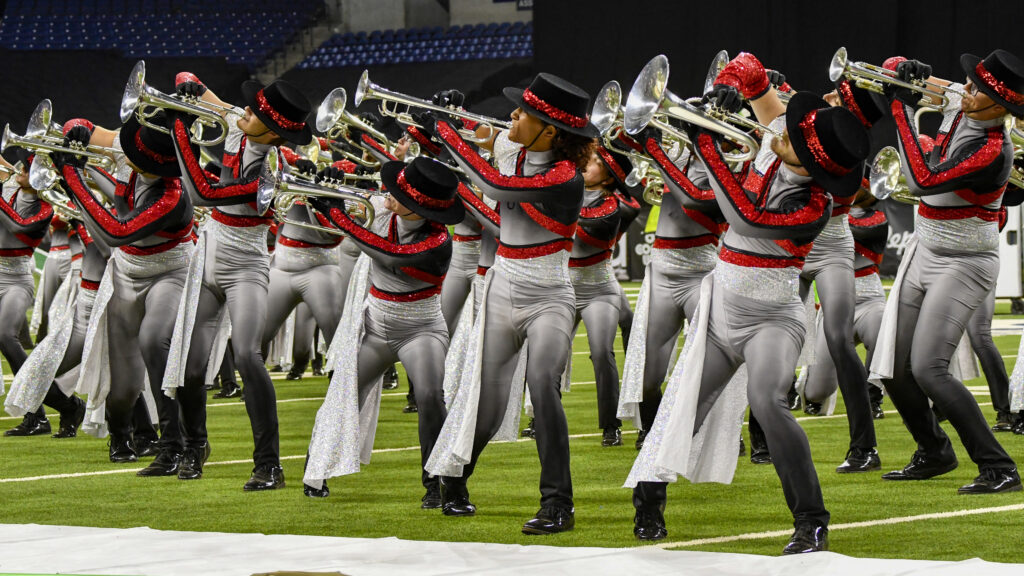The 1987 DCI World Championships at the University of Wisconsin’s Camp Randall Stadium welcomed Bluecoats into the Finals for the first time in the corps’ history. It’s also well remembered for the Garfield Cadets’ “Appalachian Spring” production taking the title over the Santa Clara Vanguard by only a tenth of a point.
Vanguard lost only two shows all season, both to the Cadets in Madison. Powering through to the championship title late in the summer, the Cadets had lost three shows to Spirit of Atlanta earlier in the season. By August, Spirit finished in 10th place in Madison, a whopping 10.30 points under the Cadets’ winning score. At the end, the top two corps each won one caption outright and tied each other in the other two captions on the judges’ sheets.
Santa Clara Vanguard’s costumed spectacular opened with Alfred Reed’s “Russian Christmas Music,” written by the composer in 1944 when he was a 23-year-old staff arranger for the Denver-based 519th U.S. Army Air Force Band. This piece single-handedly launched Reed on the way to becoming the nation’s most successful composer for wind bands. Reed was put under the gun to quickly write a new piece of Russian music to premiere at a major U.S.-Soviet friendship concert, to be performed by members of five service bands in the Denver area for a national broadcast audience. Reed completed the work in just 11 days, finishing five days before the concert.
Much of the music was inspired by liturgical music of the Eastern (Russian) Orthodox Church, and the first movement, which served as the open of Vanguard’s production, was an actual Russian Christmas carol from the 16th Century, known as “Carol of the Little Russian Children.” Large metal plates replicated the sounds of church bells as corps members milled about in their Russian fur hats. Performers portraying Orthodox clergy blessed a religious icon as a thurible (an incense censer) was swung from a chain. The drum line poured out from a large fabric tunnel and the brass players let loose with the main theme of “Cathedral Chorus” before bringing down the volume to set up a big, spectacularly loud push.

Next was Nikolai Rimsky-Korsakov’s “Dance of the Tumblers,” first performed by the corps in 1975 when it was known as “Dance of the Buffoons.” (The original is known by both titles and in Russian is titled “Dance of the Skormorkhi,” referencing traveling troubadours, dancers, acrobats, and clowns.) Rimsky-Korsakov, perhaps best known for another Vanguard classic, “Scheherazade,” wrote the work for his 1881 opera, “The Snow Maiden.” Set in prehistoric times of Russian mythology, the piece is from a scene in the opera when the Tsar hosted a celebration feast for the coming of spring.
The selection opened with several comical percussion instruments, including various whistles and a duck call. The section was quite light-hearted and included tumbling by the male color guard members, playing off the title. Upon the end, the work immediately segued into a percussion feature of “Lezghinka,” from Aram Khachaturian’s “Gayne Ballet,” written by the Soviet Armenian composer in 1942 as a nationalist ballet about a woman torn between her love for his husband and her disdain for discovering his treason to the Soviet cause.
Vanguard first performed this movement in 1978 and 1979, but interestingly has never performed the most famous piece from the ballet, “Sabre Dance.” The spirited dance piece was followed by “Lullaby,” also from “Gayne Ballet.” The music was accented by long, silver lamé banners surrounding a dancing maiden held aloft on a platform carried by the male members of the guard.
The show concluded with two works from Modest Mussorgsky’s “Pictures at an Exhibition,” written for solo piano in 1874. (Most people are familiar with the work in its orchestral form as arranged by Maurice Ravel, famed composer of “Bolero.”) The 10-movement suite was written in memory of the composer’s artist/architect friend, Viktor Hartmann, who died of a brain aneurysm the previous year. A specific work of Hartmann inspired each of the movements.

“Hut of Baba Yaga,”also known as “Hut on Fowl’s Legs,” was based on Hartmann’s drawing of a clock in the form of the style of Baba Yaga’s hut. (In Slavic folklore, Baba Yaga is a deformed supernatural being that flies around under her own power.) Dancers threateningly postured with scimitars which are curved swords popular in medieval western Asia.
As in the original, “Hut of Baba Yaga” segued directly into “Great Gate of Kiev,” the concluding work of the suite. The grand gate was an architectural proposal by Hartmann to serve as a monument commemorating Tsar Alexander II’s escape from an assassination attempt in 1866. His design won a national competition, but the gate never got built. A wizard seemed to set everything in motion as Vanguard percussionists played bells and chimes that rang forth across the field. Visually, eight large arched snowflake banners floated like clouds above the corps.
A contraption, summoned forth by the wizard, was brought to the front of the field, empty and mysterious. A cover was pulled over it by the priest and his helper as the wizard stood by, waiting to give the signal to lift the cover and reveal a damsel who seemed to be conjured out of thin air as the horns blared the great theme that is one of the most glorious finales in all of music. It was a sneak preview of the Phantom of the Opera who would disappear at the end of the corps’ shows over the next two years, but in reverse.
1987 Overview

Michael Boo was a member of the Cavaliers from 1975-1977. He wrote about the drum corps activity for more than 35 years while serving as a staff writer for various Drum Corps International projects. During his lifetime Boo wrote for numerous other publications including an honors-winning book on the history of figure skating. He also was an accomplished composer. Boo passed away in 2020 and was inducted into the DCI Hall of Fame posthumously in 2021.





